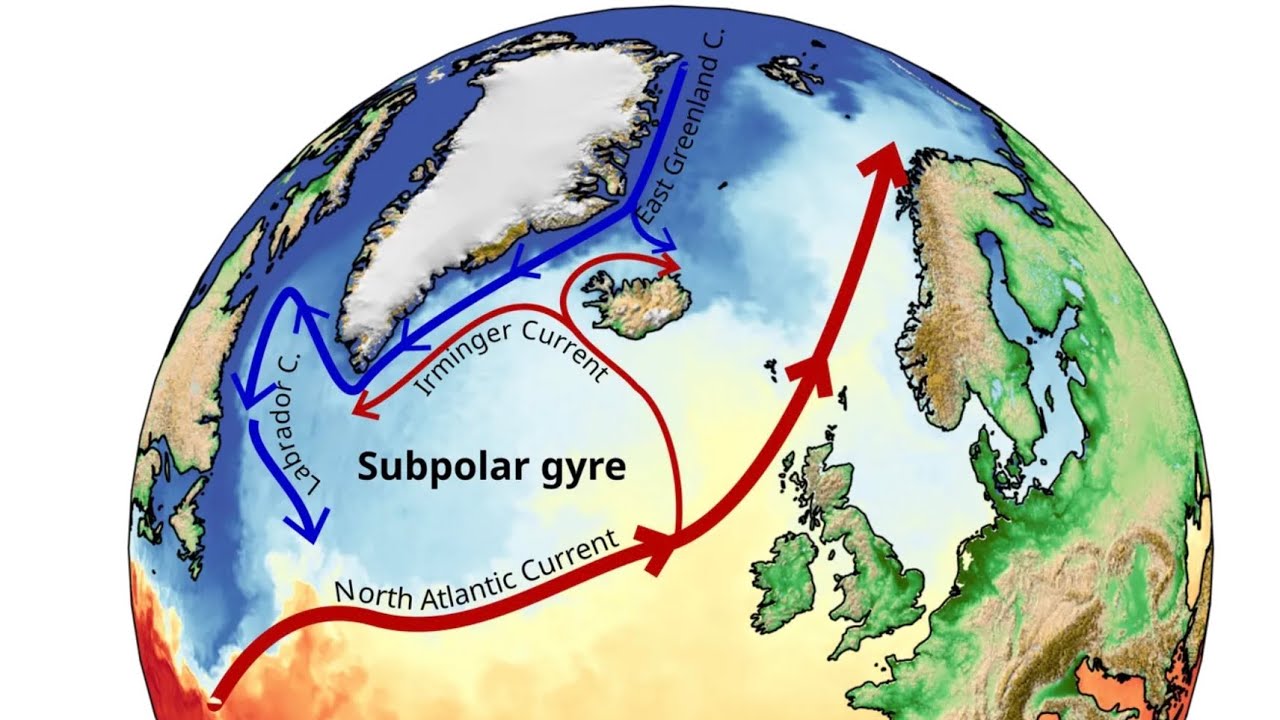This is an automated archive made by the Lemmit Bot.
The original was posted on /r/collapse by /u/paulhenrybeckwith on 2025-10-08 03:15:30+00:00.
Subpolar Gyre Branch of AMOC Ocean Circulation System may be on the Verge of Collapse
We often talk about the observed slowdown of the AMOC (Atlantic Meridional Overturning Circulation) ocean currents. A few videos back, I chatted about changes to the so-called “Pacific AMOC” known as the Kuroshio Current. Prior to that, I chatted about SMOC (Southern Meridional Overturning Slowdown) near Antarctica. A dynamic, moving, mixing ocean is a healthy ocean, and unfortunately global signs all point to a less dynamic, stratified, dying ocean.
Getting back to the North Atlantic Ocean, there is a branch of the AMOC called the Subpolar Gyre (SPG) which seems to be even less stable than the AMOC. If the AMOC failed, of course the SPG would also fail. However, if the SPG failed, then the AMOC could still continue, albeit in a weakened state.
The so-called Global Warming Hole, or region of anomalously cold water south of Greenland may be strongly indicative of a very unstable SPG.
A new paper, just published in early October, examines the so-called “tree rings of the ocean”, which are the growth lines observed in clams in the North Atlantic Ocean. These growth lines indicate that the SPG is rapidly reducing now, and had significant change around 1920. We also believe that the SPG failed in the 12th to 13th century and precipitated the onset of the Little Ice Age.
I chat about what this new peer-reviewed scientific paper on the SPG is indicating.
Not good…
Please subscribe to my YouTube channel. As well as my website, and YouTube, you can find me on Patreon, Facebook, Twitter/X, LinkedIn, Instagram, Reddit (multiple climate channels within), Quora, TikTok, Discord, Mastodon, Twitch, Vimeo, Bluesky, TruthSocial, Threads, Substack, Tumblr, Pinterest, etc…
References
Article in Livescience: Massive system of rotating ocean currents in the North Atlantic is behaving strangely — and it may be reaching a tipping point: By Sascha Pare published October 3, 2025 An analysis of clam shells suggests the North Atlantic subpolar gyre has had two periods of destabilization over the past 150 years: one around 1920 and the other from 1950 through present. https://www.livescience.com/planet-earth/rivers-oceans/massive-system-of-rotating-ocean-currents-in-the-north-atlantic-is-behaving-strangely-and-it-may-be-reaching-a-tipping-point
Wikipedia article on Bivalves: https://en.wikipedia.org/wiki/Bivalvia
Wikipedia article on Dog Cockles: https://en.wikipedia.org/wiki/Tucetona_laticostata
Peer reviewed scientific paper in journal Science Advances: Recent and early 20th century destabilization of the subpolar North Atlantic recorded in bivalves Link: https://www.science.org/doi/epdf/10.1126/sciadv.adw3468
Abstract Climate change risks triggering abrupt weakening in two climatically important North Atlantic Ocean circulationelements, the subpolar gyre and the Atlantic Meridional Overturning Circulation (AMOC). Loss of AMOC stabilityhas been inferred from slowing recovery of temperature and salinity fluctuations over time. However, observa-tional datasets, constructed from records with sparse spatial and temporal coverage, may introduce substantialbiases in stability indicators. Alternative records are therefore needed for reliable stability assessments. Here, us-ing bivalve-derived environmental reconstructions, we show that the subpolar North Atlantic has experiencedtwo destabilization episodes over the past ~150 years. The first preceded the rapid circulation changes associatedwith the 1920s North Atlantic regime shift, suggesting that a tipping point may have been crossed in the early20th century. The second and stronger destabilization began around 1950 and continues to the present, support-ing evidence of recent stability loss and suggesting that the region is moving toward a tipping point.

